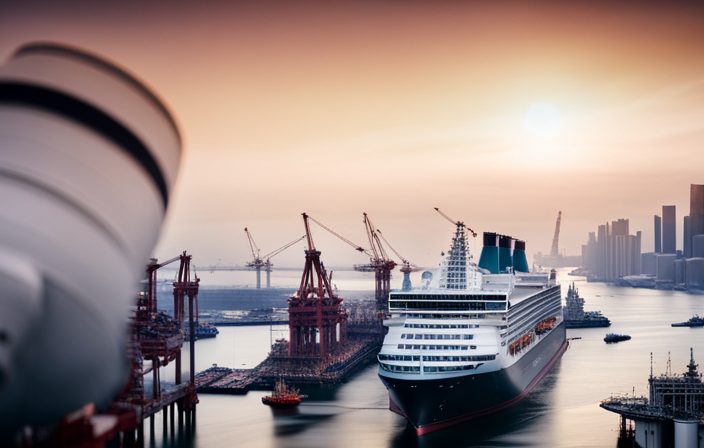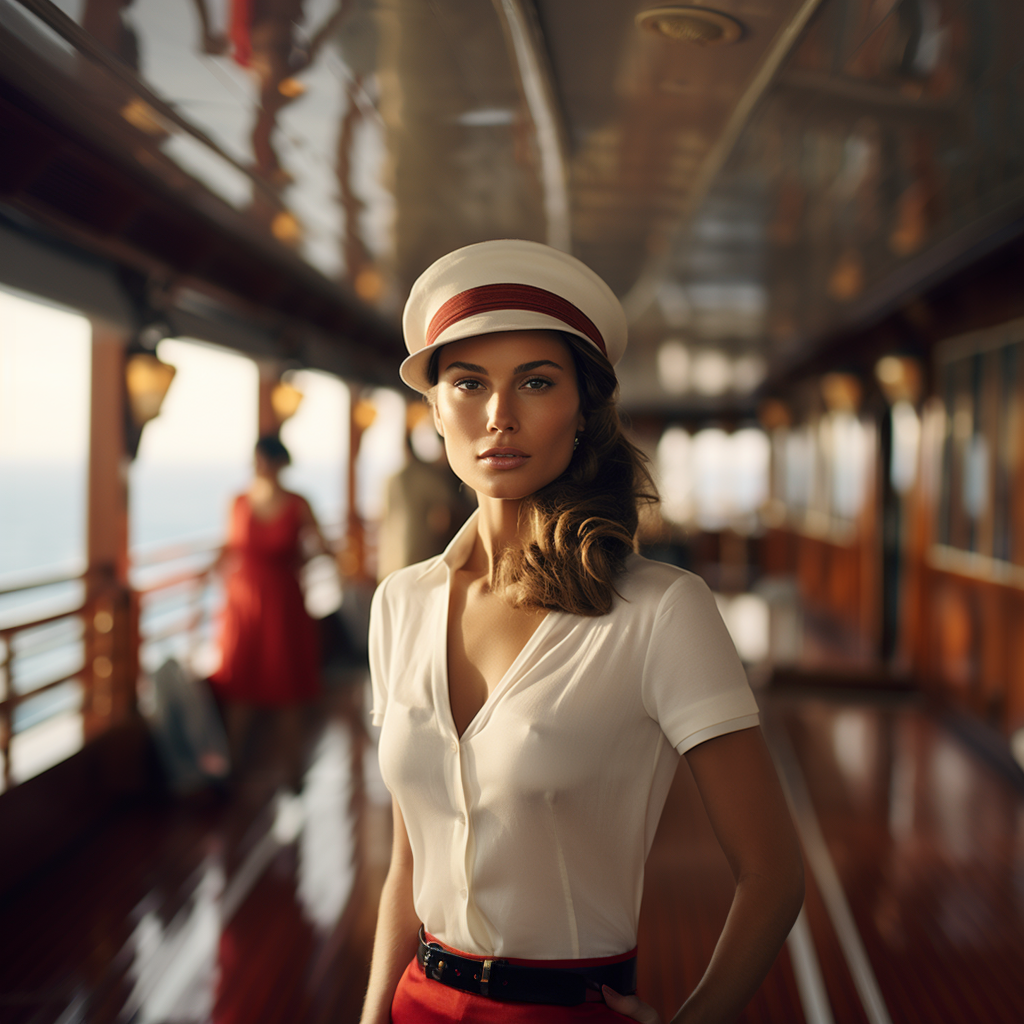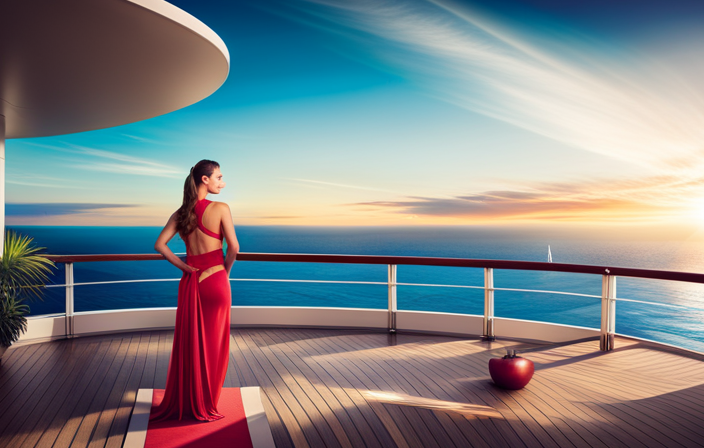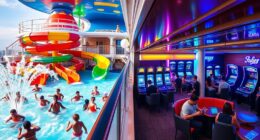It is often said that the ocean offers limitless opportunities, and what superior method to discover these potentialities than by venturing on an impressive cruise ship? In this article, I’ll guide you through the process of constructing a cruise ship, starting from the early design phases to the concluding enhancements.
First, we embark on the journey of conceptualization and design, where every aspect of the ship is carefully planned and crafted.
Then, we delve into the realm of engineering and structural planning, ensuring that the ship is not only aesthetically pleasing but also structurally sound.
Next, we navigate through the complexities of material selection and procurement, sourcing the finest materials to create a vessel that is both luxurious and durable.
From there, we dive into the construction of the hull and superstructure, meticulously piecing together the foundation of the ship.
Along the way, we install the intricate mechanical and electrical systems that keep the ship running smoothly.
And of course, we cannot forget the amenities and entertainment facilities, which are the heart and soul of any cruise ship.
Join me as we navigate through the detailed process of building a cruise ship, where every step is taken with precision and expertise.
Key Takeaways
- The process of building a cruise ship involves initial design and conceptualization, engineering and structural planning, material selection and procurement, and construction of the hull and superstructure.
- Collaboration between engineers and architects is crucial in overcoming challenges such as building in harsh sea conditions and ensuring stability and safety.
- Careful selection and acquisition of construction materials, considering factors like strength, durability, weight, and budget management, are vital in the construction process.
- The installation of mechanical and electrical systems, interior design and furnishing, installation of amenities and entertainment facilities, and implementation of safety and security measures are important steps in building a cruise ship.
Initial Design and Conceptualization
Now, envision yourself as the visionary architect who will bring to life the initial design and concept of your majestic cruise ship.
The process of designing a cruise ship begins with a meticulous initial design and conceptualization phase. This is where the ship’s general layout, exterior appearance, and interior spaces are carefully planned and visualized.
The initial design involves creating detailed sketches and 3D models that showcase the ship’s overall structure, including the number of decks, cabin arrangements, and public areas.
The conceptualization phase focuses on selecting the ship’s theme, style, and amenities, ensuring a unique and captivating experience for passengers.
Seamlessly transitioning into the subsequent section about engineering and structural planning, the initial design and conceptualization serve as the foundation upon which the ship’s intricate engineering and structural elements are built.
Engineering and Structural Planning
Additionally, engineers and architects collaborate closely to design and plan the intricate structure of the magnificent vessel.
The engineering challenges involved in building a cruise ship are immense. The ship must be able to withstand the harsh conditions of the open sea, including strong winds, waves, and extreme temperatures.
Structural planning is essential to ensure the ship remains stable and safe for passengers and crew. This involves careful consideration of weight distribution, stability, and structural integrity.
Cost considerations also play a significant role in the engineering and structural planning process. Engineers work to find innovative solutions that meet safety regulations while minimizing costs. These considerations include selecting efficient materials, optimizing space utilization, and designing systems that require minimal maintenance.
By addressing these challenges, engineers and architects lay the foundation for the subsequent section on material selection and procurement, where the ship’s construction materials are carefully chosen and acquired.
Material Selection and Procurement
One important aspect of creating a magnificent vessel involves carefully selecting and acquiring the materials needed for construction. To ensure the highest quality and durability, material sourcing plays a critical role in the success of building a cruise ship. When it comes to material selection, three key factors must be considered:
-
Strength and Durability: The materials chosen must withstand the harsh marine environment and the stresses of the open sea. Steel alloys and composite materials are commonly used due to their exceptional strength and corrosion resistance.
-
Weight and Efficiency: Optimal material selection is crucial to achieve a balance between structural integrity and weight reduction. Lightweight materials such as aluminum alloys can help improve fuel efficiency, reduce emissions, and enhance overall performance.
-
Budget Management: While prioritizing quality, managing the budget is essential. Careful negotiation with suppliers, bulk purchasing, and strategic partnerships can help streamline material procurement and minimize costs.
With the materials sourced and budget managed, the construction of the hull and superstructure can commence, forming the foundation of a remarkable cruise ship.
Construction of the Hull and Superstructure
Once the materials have been carefully selected and acquired, the construction of the hull and superstructure begins, laying the groundwork for an extraordinary seafaring vessel.
The hull construction involves assembling the steel plates, known as shell plating, to create the outer structure of the ship. These plates are carefully aligned and welded together, ensuring a strong and watertight hull.
The superstructure construction involves building the upper decks and cabins, which are typically made from lightweight materials such as aluminum. This process requires precision and attention to detail to ensure proper alignment and stability.
Once the hull and superstructure are completed, the ship begins to take shape, ready to house the multitude of mechanical and electrical systems that will be installed in the next phase.
Installation of Mechanical and Electrical Systems
To install the mechanical and electrical systems, you’ll need to carefully integrate an intricate network of wires, cables, and pipes throughout the ship, connecting engines, generators, HVAC systems, and other vital components.
This process requires precise planning and execution to ensure that all systems function seamlessly. Mechanical and electrical maintenance is crucial to keep the ship operating smoothly and prevent any potential malfunctions. Regular inspections and repairs are conducted to identify and address any issues promptly.
Furthermore, energy efficiency optimization is a key consideration in the installation of these systems. Advanced technologies, such as energy-efficient lighting and HVAC systems, are implemented to reduce energy consumption and minimize the ship’s environmental impact.
As the mechanical and electrical systems are successfully installed and maintained, the focus shifts to the next phase of interior design and furnishing, where the ship’s aesthetics and comfort come to life.
Interior Design and Furnishing
When designing and furnishing the interior, you’ll have the opportunity to create a visually stunning space that enhances the overall experience for passengers and crew members alike.
Did you know that the average cruise ship cabin is about 200 square feet, but can feel much larger with clever design choices and efficient use of space? Furniture selection plays a crucial role in optimizing the limited area available. It is essential to choose pieces that are not only functional but also aesthetically pleasing. Attention to detail is key, considering factors such as durability, comfort, and storage capacity.
Additionally, the color palette plays a significant role in setting the ambiance of each area onboard. Careful consideration of color psychology and coordination is necessary to create a cohesive and visually appealing environment.
Transitioning into the subsequent section about the installation of amenities and entertainment facilities, the interior design and furnishing lay the foundation for creating inviting spaces that cater to the diverse preferences of passengers and crew members.
Installation of Amenities and Entertainment Facilities
As amenities and entertainment facilities are installed, passengers and crew members can indulge in a wide array of activities that enrich their onboard experience. Here are three key aspects of amenities planning and entertainment facilities design:
-
Amenities planning: This involves carefully selecting and arranging a variety of amenities to cater to the diverse needs and preferences of passengers. From luxurious spas and fitness centers to swimming pools and sports facilities, amenities planning aims to provide a comprehensive range of options for relaxation and recreation.
-
Entertainment facilities design: Designing entertainment facilities requires meticulous attention to detail to create immersive and captivating spaces. This includes theaters equipped with state-of-the-art sound and lighting systems, casinos with a wide selection of games, and nightclubs with cutting-edge audiovisual technologies. The design must ensure optimal layout and acoustics to enhance the overall entertainment experience.
-
Integration of technology: Amenities and entertainment facilities are increasingly incorporating advanced technology to offer innovative and interactive experiences. From virtual reality gaming and augmented reality shows to smart cabins with touch-screen controls, technology integration plays a crucial role in creating a modern and engaging environment.
With amenities and entertainment facilities carefully planned and designed, the next step involves testing and quality assurance to ensure everything functions seamlessly.
Testing and Quality Assurance
Get ready to experience the flawless operation and top-notch performance of the onboard amenities and entertainment facilities through rigorous testing and quality assurance.
To ensure the highest standards are met, a range of testing methods are employed throughout the construction process. These methods include functional testing, where each amenity and entertainment facility is thoroughly examined for proper operation and functionality.
Additionally, stress testing is conducted to assess the durability and performance under extreme conditions.
Quality control measures, such as regular inspections and audits, are implemented to identify any potential issues and ensure compliance with industry standards.
Through these meticulous processes, we guarantee that every aspect of the amenities and entertainment facilities is of the utmost quality.
As we move towards the final touches and finishing details, our focus remains on delivering a truly exceptional cruise ship experience.
Final Touches and Finishing Details
After completing the testing and quality assurance phase, it’s time to focus on giving the cruise ship its final touches and finishing details.
This stage is crucial to ensure that every aspect of the ship is meticulously attended to before it’s ready for launch and delivery.
The finishing touches involve applying the last layers of paint, polishing all surfaces, and installing the remaining fixtures and furnishings.
Thorough final inspections are conducted to verify that all systems are functioning seamlessly and that safety regulations are being met.
These inspections encompass everything from the propulsion and navigation systems to the onboard amenities and entertainment facilities.
Once all the finishing touches are in place and the final inspections have been successfully completed, the cruise ship is poised for its grand launch and delivery, marking the culmination of the entire construction process.
Launch and Delivery of the Cruise Ship
The moment has finally arrived for the highly anticipated launch and delivery of the magnificent vessel, marking the culmination of years of hard work and dedication. Did you know that on average, a cruise ship can take anywhere from 2 to 5 years to complete from start to finish?
During the launch process, meticulous planning and coordination are essential. Here is a step-by-step guide to the launch and delivery process:
-
Float Out: The ship is carefully moved from its construction dock to the water using a complex system of tugs and winches.
-
Sea Trials: The ship undergoes a series of rigorous tests to assess its performance, stability, and safety features.
-
Interior Finishing: The final touches are added to the ship’s interior, including furnishings, decorations, and amenities.
-
Delivery Ceremony: The ship is officially handed over to the cruise line in a grand ceremony, where key stakeholders celebrate the successful completion of the project.
With the launch and delivery complete, the cruise ship is ready to embark on its maiden voyage, providing unforgettable experiences for passengers around the world.
Frequently Asked Questions
How long does it take to build a cruise ship from start to finish?
It typically takes several years to build a cruise ship from start to finish. The construction timeline depends on factors such as shipyard capacity, design complexity, and customization requirements.
How much does it cost to build a cruise ship?
The cost breakdown of building a cruise ship varies depending on its size and features. Financing options include loans, leasing, and partnerships. It is important to carefully consider all expenses and funding options before embarking on such a project.
What are the environmental considerations taken into account during the construction of a cruise ship?
When constructing a cruise ship, I prioritize sustainable materials and an energy-efficient design. This involves using eco-friendly materials and implementing advanced technologies to reduce emissions and promote a greener operation throughout the ship’s lifecycle.
How many workers are typically involved in the construction of a cruise ship?
Typically, the construction of a cruise ship involves a large number of workers. The labor requirements vary based on the construction timeline, but it often includes skilled craftsmen, engineers, welders, and other specialized workers.
Is it possible to customize certain aspects of a cruise ship during the construction process?
During the construction process of a cruise ship, there are customization options available. These options allow for personalized aspects such as cabin layout, interior design, and onboard amenities. The benefits of customization include creating a unique and tailored experience for passengers.
Conclusion
In conclusion, building a cruise ship is a complex and intricate process that requires meticulous planning and attention to detail.
From the initial design and conceptualization to the final touches and finishing details, every step is crucial in creating a remarkable vessel that will provide an unforgettable experience for passengers.
By combining engineering expertise, material selection, and cutting-edge technology, the construction of a cruise ship becomes a remarkable feat of human ingenuity.
So next time you embark on a cruise adventure, take a moment to appreciate the remarkable craftsmanship and coincidences that brought this magnificent floating paradise to life.
Meet Asra, a talented and adventurous writer who infuses her passion for exploration into every word she writes. Asra’s love for storytelling and her insatiable curiosity about the world make her an invaluable asset to the Voyager Info team.
From a young age, Asra was drawn to the power of words and their ability to transport readers to far-off lands and magical realms. Her fascination with travel and cultures from around the globe fueled her desire to become a travel writer, and she set out on a journey to turn her dreams into reality.











